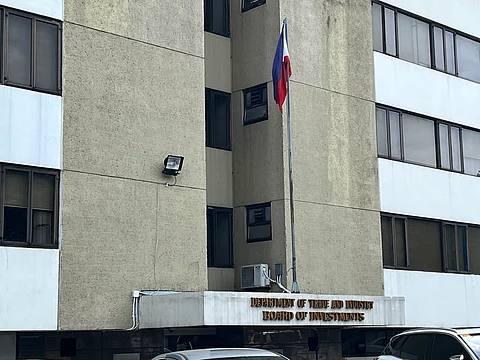
- NEWS
- the EDIT
- COMMENTARY
- BUSINESS
- LIFE
- SHOW
- ACTION
- GLOBAL GOALS
- SNAPS
- DYARYO TIRADA
- MORE

The country’s Board of Investments (BOI) said even if the 20 percent tariff on all U.S.-bound Philippine products takes effect on 1 August, the manufacturing sector would be modestly affected, unlike the export sector.
The BOI earlier said that the manufacturing sector improved by 160 percent in the first half, with a total project cost of P26.6 billion, while manufacturing projects in the pipeline are worth P33.5 billion.
“The impact of the 20 percent U.S. tariff on the Philippine manufacturing sector is expected to be moderate, with only around 17 percent of total exports to the U.S. directly affected. Crucially, high-value sectors such as electronics — which account for a significant share of the country’s industrial output — are largely exempted from the tariff coverage,” said BOI director Sandra Recolizado in an email interview.
“This limited exposure helps shield priority manufacturing segments from immediate disruption, allowing the country to sustain export performance in strategic industries and maintain its competitiveness in key global supply chains,” she added.
Recolizado stressed that at the onset, the 20 percent U.S. tariff may dampen the economic momentum brought by the recent uptick in the manufacturing sector, due to potentially lower export revenues.
Moreover, Recolizado said the overall impact of the U.S. tariff hike on the manufacturing sector is expected to be contained due to several mitigating factors.
She said strong domestic demand continues to serve as a key stabilizer, driving production and helping cushion the impact of external shocks such as the U.S. tariff increase.
“The resilience of local consumption provides a reliable foundation for sustained industrial activity, aligning with the government’s broader strategy to strengthen internal market linkages and build a more self-reliant, demand-driven manufacturing ecosystem,” she said.
She also emphasized the Philippine government’s proactive engagement with the U.S. in tariff negotiations, saying it reflects a strategic effort to safeguard the country’s industrial growth trajectory amid shifting global trade dynamics.
“These ongoing dialogues aim to secure more favorable trade terms, reduce long-term risks to export-oriented manufacturers, and reinforce investor confidence in the resilience, adaptability, and policy support underpinning the Philippine manufacturing environment,” Recolizado said.
The country’s economic team, led by Special Assistant to the President for Investment and Economic Affairs Secretary Frederick Go, Trade Secretary Cristina Roque, and Undersecretaries Allan Gepty and Ceferino Rodolfo, is expected to go to Washington, D.C. soon to renegotiate the 20 percent tariff with U.S. Trade Representative Jamieson Greer.
Malacañang, meanwhile, said tariff talks will also take place when President Ferdinand Marcos Jr. and U.S. President Donald Trump meet at the White House next week.
“While the Philippine government remains committed to renegotiating the tariff structure with the U.S. to pursue a better and more mutually beneficial arrangement, it is still worth noting that the current tariff rate of the Philippines remains among the lowest in the region, next only to Singapore’s 10 percent,” Recolizado said.
Laos and Myanmar receive the highest tariff rate from the U.S. at 40 percent, followed by Thailand and Cambodia (36 percent), Indonesia (32 percent), Malaysia (25 percent), and both Vietnam and the Philippines at 20 percent.
The Philippine Exporters Confederation, Inc. earlier aired concerns over the country receiving the same tariff rate as Vietnam, stressing that the latter holds greater leverage in trade.
Data from the USTR showed that America’s goods trade with the Philippines totaled $23.5 billion in 2024. U.S. exports to the Philippines amounted to $9.3 billion, while imports reached $14.2 billion — resulting in a $4.9 billion trade-in-goods deficit, up 21.8 percent year-on-year.
